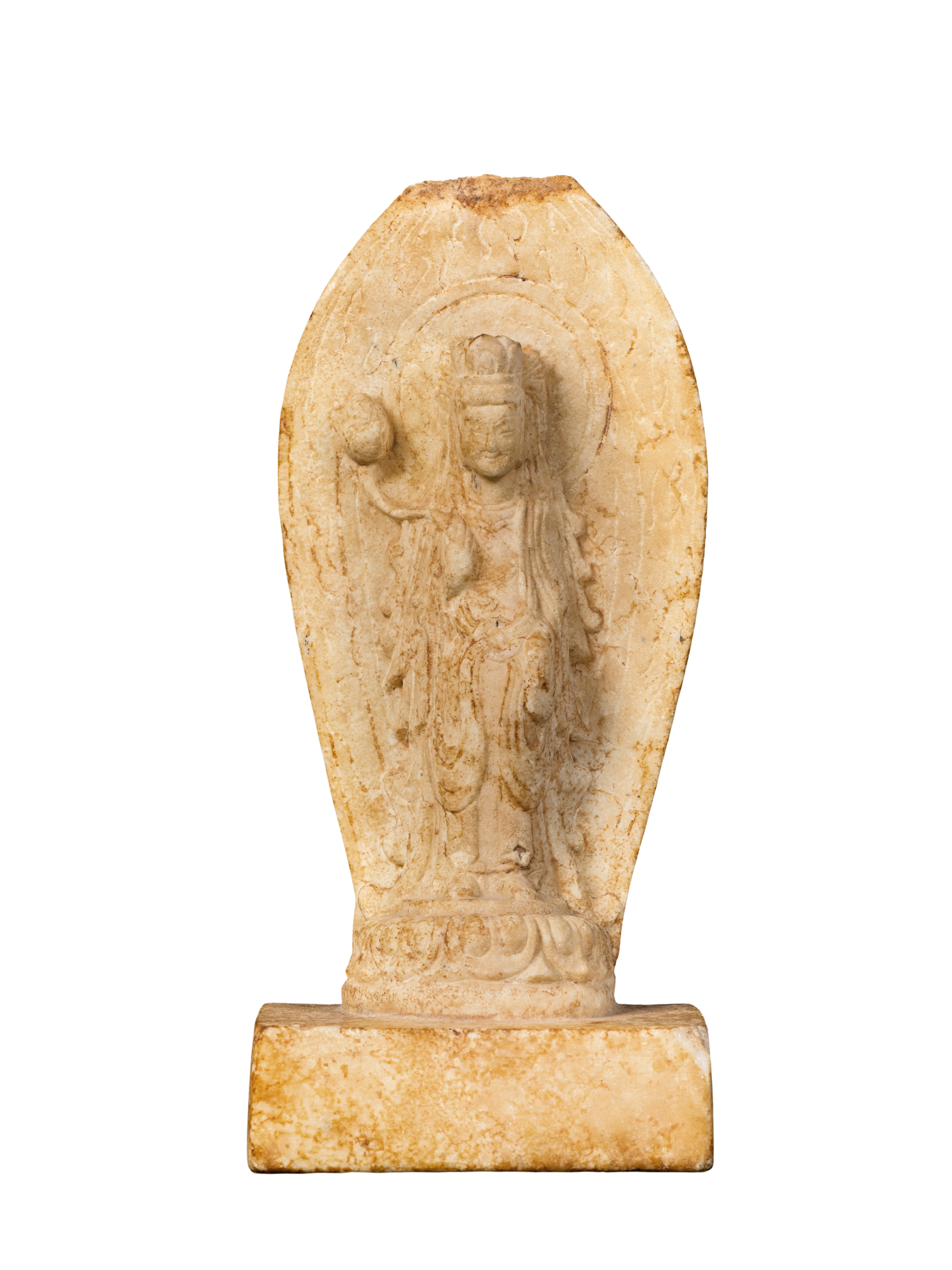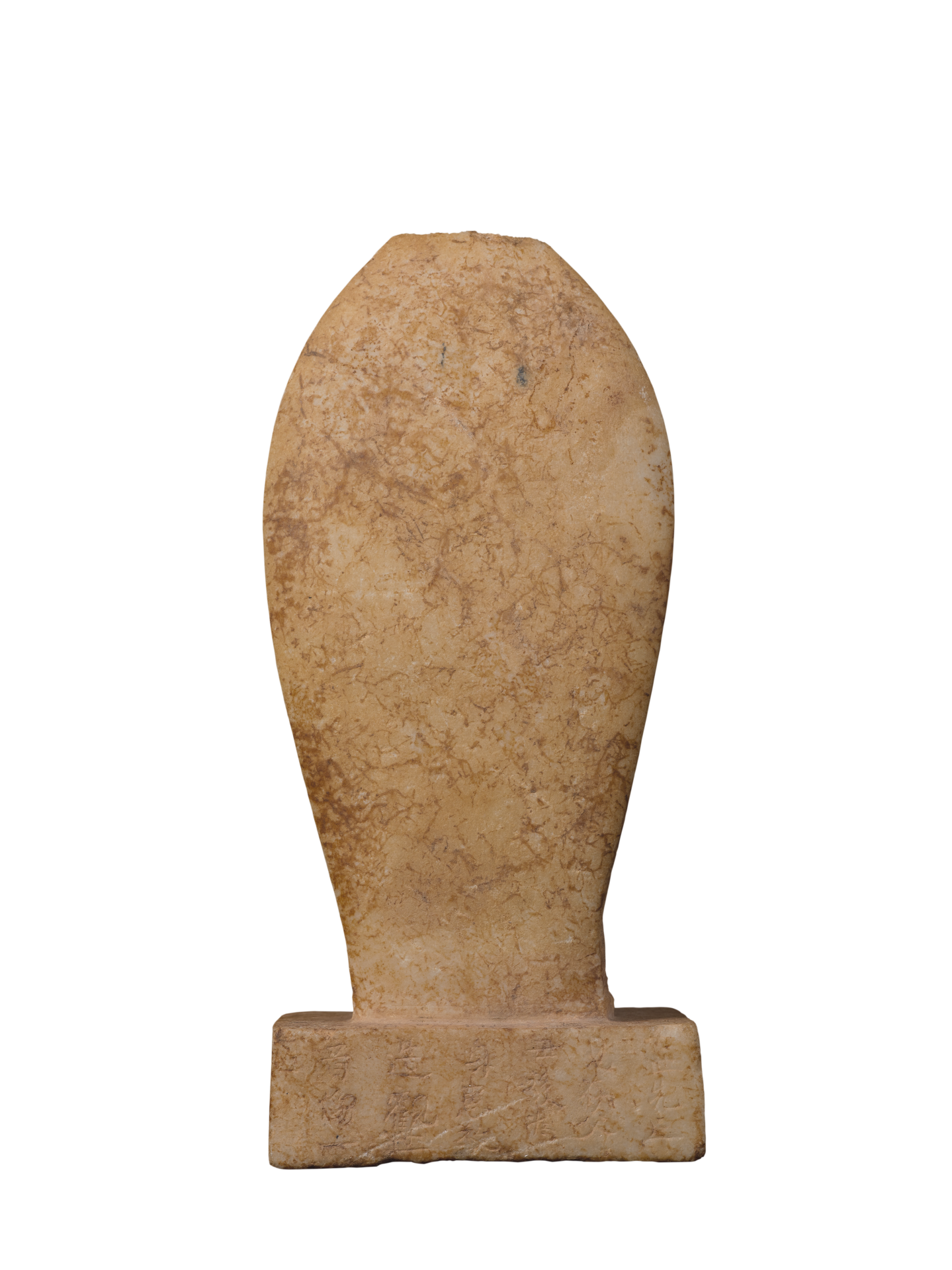Standing Guanyin Bodhisattva
Bodhisattva Avalokiteśvara is commonly known to the Chinese as Guanyin, short for Guanshiyin (The One Who Perceives the Sounds of the World) as translated by Venerable Xuanzang (602-664 CE). During the Northern and Southern Dynasties (420-589 CE), the worship of Guanyin prevailed around Hebei. Many standing statues of Guanyin were found among Dingzhou white stone sculptures. This finely and meticulously sculpted work dated to the Eastern Wei dynasty (534-550 CE) is an example. The Bodhisattva has a crown on his head and a faintly smiley countenance with indented lip corners. He is standing on a lotus-shaped pedestal with downward-facing petals; his right hand grasping the long stalk of a lotus bud and left hand holding a peach-shaped object.
According to Indian tradition, the lotus is the most sacred of all flowers and is invested with rich connotations. It is mentioned in Saṃyukta Āgama that Śākyamuni once said, “The puṇḍarīka (lotus) grows out of water but it is not blemished by [the muddy] water. Likewise, I was born in the [sentient] world but not contaminated by the [defilements of the] world.” Thus, lotus is a symbol of the Buddha untouched by defilements in the world, like the lotus rising out of muddy water. The lotus bud held by Guanyin also symbolises sentient beings’ innately pure mind, or intrinsic enlightened mind. Since Guanyin is able to open the ‘heart lotus’ (pure inner mind) of sentient beings with his great compassion, he is also called Padmapāṇi, The Lotus Bearer, in India.
According to the votive inscription, this standing statue was carved in the 1st year of the Wuding reign (543 CE) of the Eastern Wei dynasty. The boat-shaped body light comprises two zones. The inner one is made up of a circular nimbus and an oval mandorla, both delineated by incised lines, while the outer zone features flames executed by incised lines. The style is reminiscent of the Northern Wei (386-534 CE) dynasty, while the statue’s body looks more solid and robust. Moreover, the drapery also appears more fluid and crisp, and the sinuous folds echo well with the body movement. The garments’ fabric appears diaphanous. These realistic treatments have set examples for the prevailing style of Northern Qi (550-577 CE) statuary.

